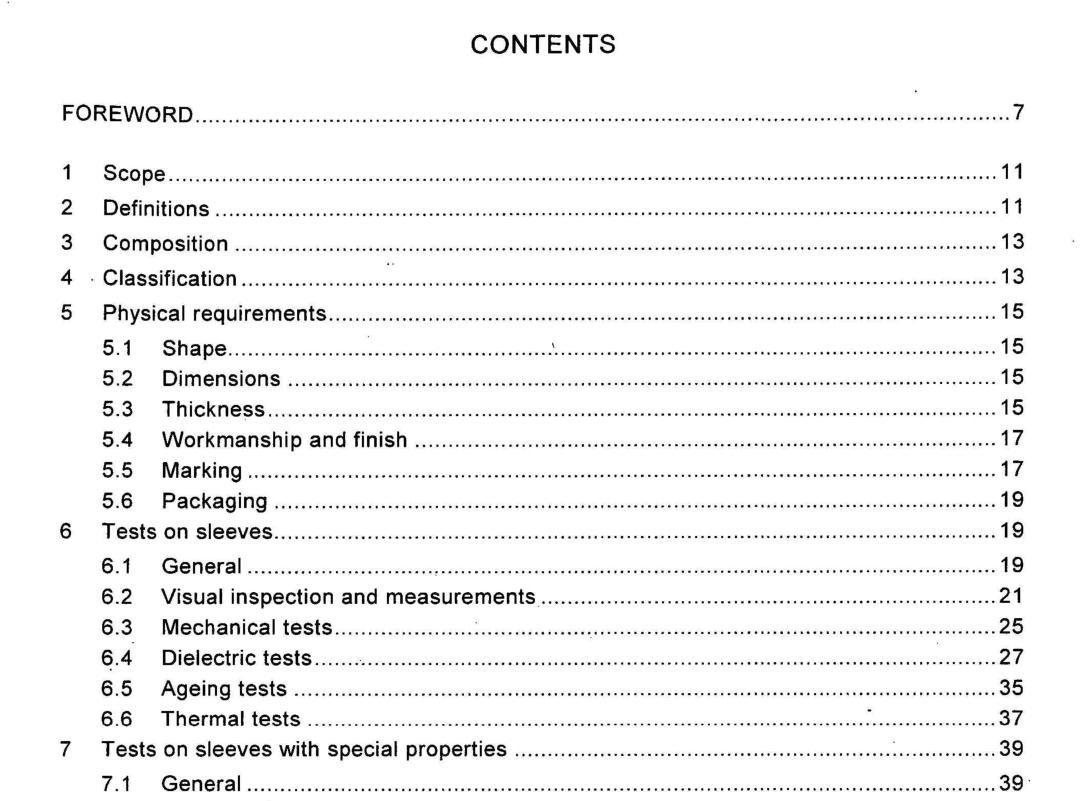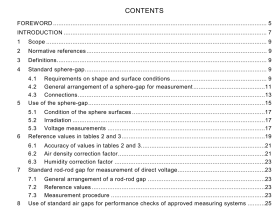IEC 60984 pdf download

IEC 60984 pdf download.Sleeves of insulating material for live working
1 Scope
This international standard is applicable to insulating sleeves for the protection of workers from accidental contact with live electrical conductors, apparatus or circuits. 1.1 Five classes of sleeve, differing in electrical characteristics, are provided and designated as: Class 0, Class 1, Class 2, Class 3 and Class 4. 1.2 Five categories of sleeve with different properties are provided, related to the following: resistance to acid, resistance to oil, resistance to ozone, combined resistance to oil and ozone, and also resistance to extreme low temperature. These are designated as Categories A, H, Z, S and C respectively. 1.3 Two styles of sleeve, differing in configuration, are provided and designated as straight taper and curved elbow.
2 Definitions
For the purpose of this standard, the terms hereafter have the following meanings: elastomer a generic term that includes rubbers, latex and elastomeric compounds that may be natural or synthetic, or a mixture, or a combination of both type test a test of one or more devices made to a certain design to show that the design meets certain specifications [IEV 151-04-15]* shoulder roll the rolled or reinforced edge of an insulating sleeve nearest to the shoulder cuff roll the roll or reinforced edge of a sleeve at the cuff electrical puncture a disruptive breakdown through a solid insulant [IEV 121-03-13] flashover an arc by-passing an insulating body [IEV 121-03-14] nominal voltage a suitable approximate value of voltage used to designate or identify a system [IEV 601-01-21]
3 Composition
The sleeves shall be manufactured of elastomers and produced by a seamless process. The holes provided in sleeves, for the purposes of strap or harness attachments, shall have non-metallic reinforced edges, and shall be nominally 8 mm in diameter.
5.4 Workmanship and finish
Sleeves shall be free on both inner and outer surfaces from harmful physical irregularities that can be detected by thorough test and inspection. Harmful physical irregularities shall be defined as any feature that disrupts the uniform, smooth surface contour, such as pinholes, cracks, blisters, cuts, conductive embedded foreign matter, creases, pinch marks, voids (entrapped air), prominent ripples and prominent mould marks. Non-harmful physical irregularities shall be defined as surface irregularities .present on the inner and outer surfaces of the sleeve due to imperfections on forms or moulds or other imperfections inherent in the manufacturing process. These irregularities appear as mould marks that look like cuts even though they are actually raised ridges of elastomer, indentations, or protuberances that are acceptable provided that: a) the depression is not larger than 1,6 mm in diameter, has rounded edges and no visible break in the surface, and cannot be seen on the opposite side when stretched over the thumb; b) there are not more than five depressions as described in a) anywhere on the sleeve and any two are separated by at least 15 mm; c) the indentations, protuberances or mould marks tend to blend into a smooth surface upon stretching of the material; d) the small projections or protuberances represent only a small amount of excess elastomer that cannot be readily removed with the finger and these projections do not appreciably affect the stretching of the elastomer.
6.2.2 Dimensions
Type test and sampling test (see 5.2 and figures 1 and 2). 6.2.2.1 Straight taper sleeves Dimensions of straight taper sleeves, as ilustrated in figure 1,shall be determined with the sleeve in a flat condition (that is, with one side firmly and uniformly pressed against the other). A convenient device for measuring is a board with a centre line upon which the sleeve is placed so that D1 equals D2 and E1 equals E2, in which case C1 will be greater than C2. Dimension A- The overall length shall be measured from the outside edge of the wrist opening to the outside edge of the shoulder opening, parallel to the centre line. Dimension B – The underarm length shall be measured from the outside edge of the cuff opening to the lowest point of the underarm opening along the centre line. Dimension C – The shoulder opening width shall be the sum of C1 and C2, minus twice the thickness of the sleeve, measured perpendicular to the centre line as shown in figure 1. Dimension D – The wrist opening width shall be the sum of D1 and D2, minus twice the thickness of the sleeve, measured perpendicular to the centre line as shown in figure 1.









